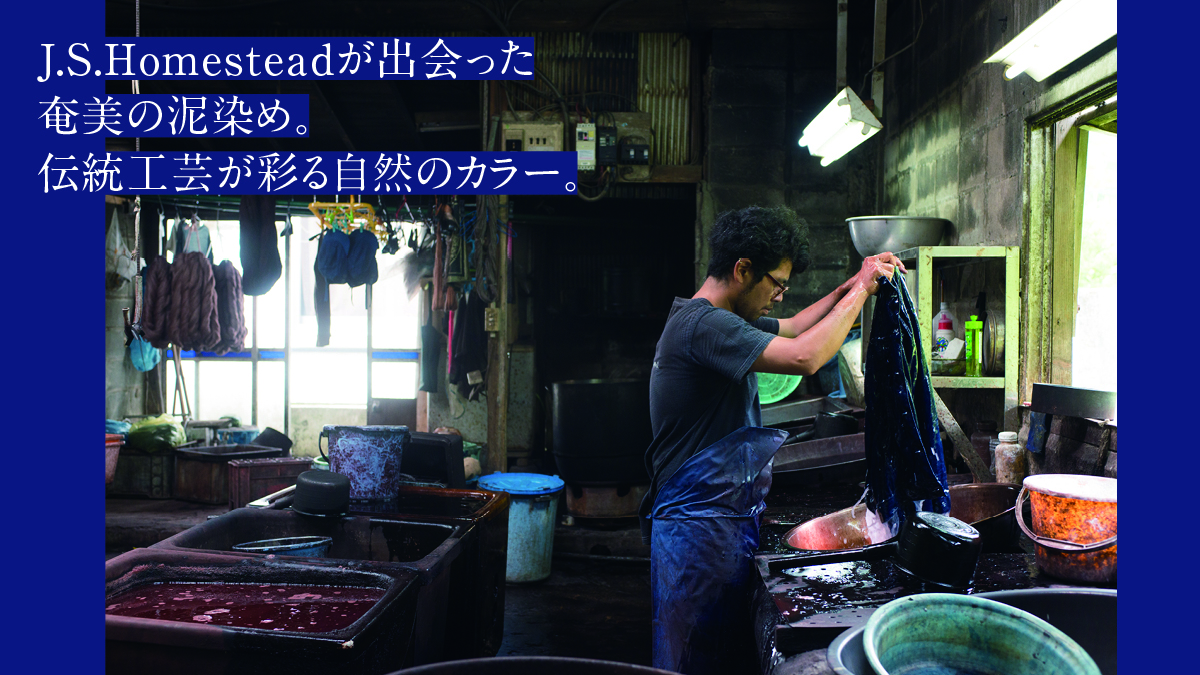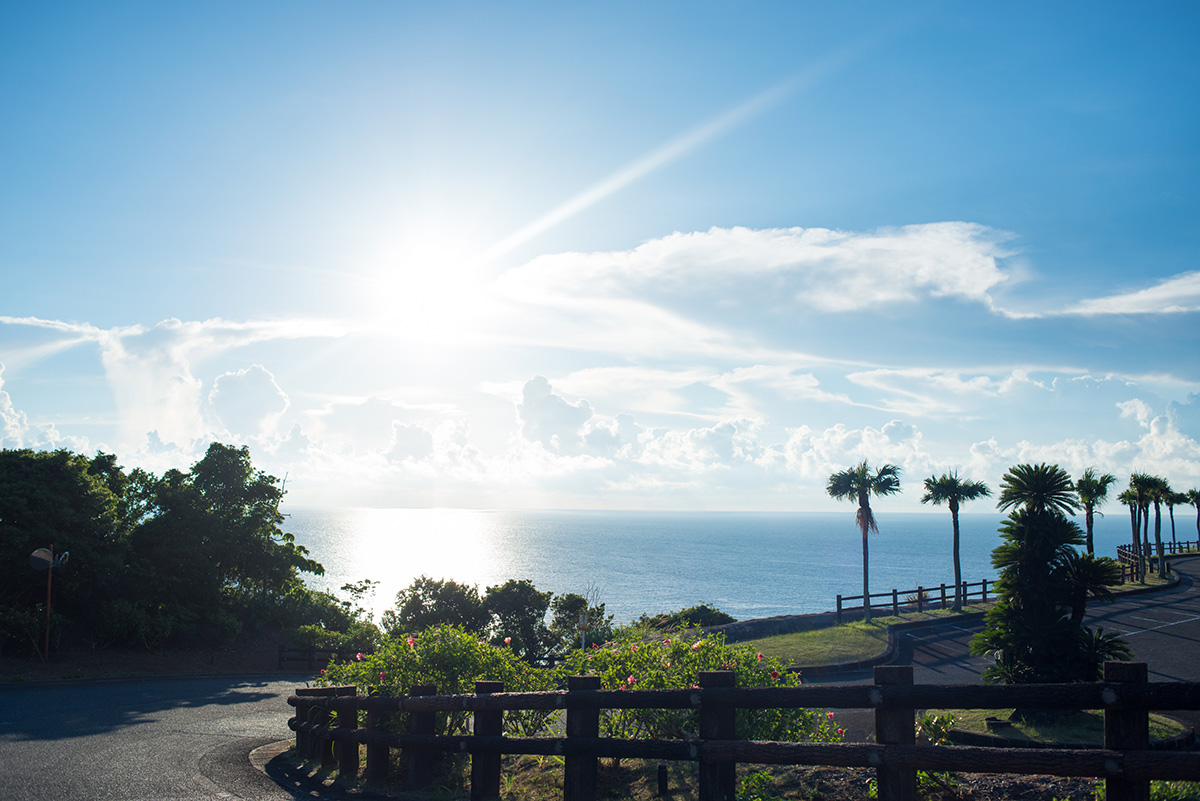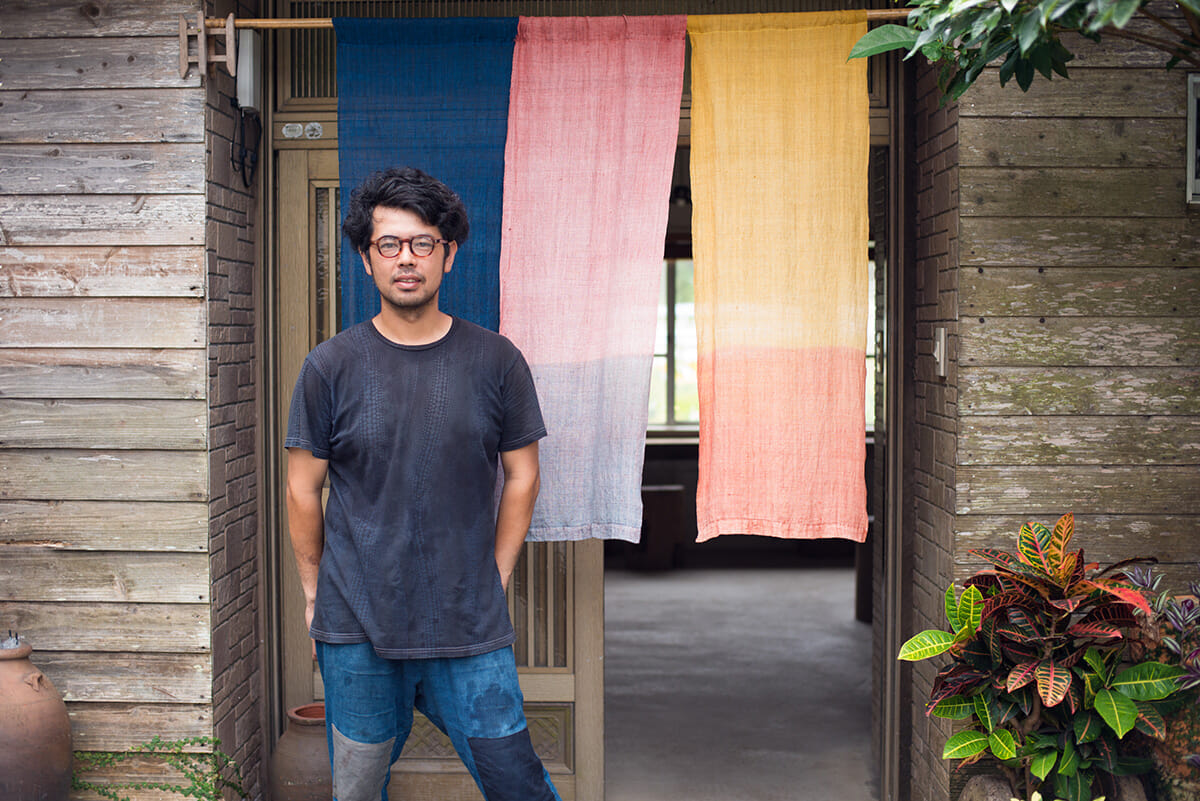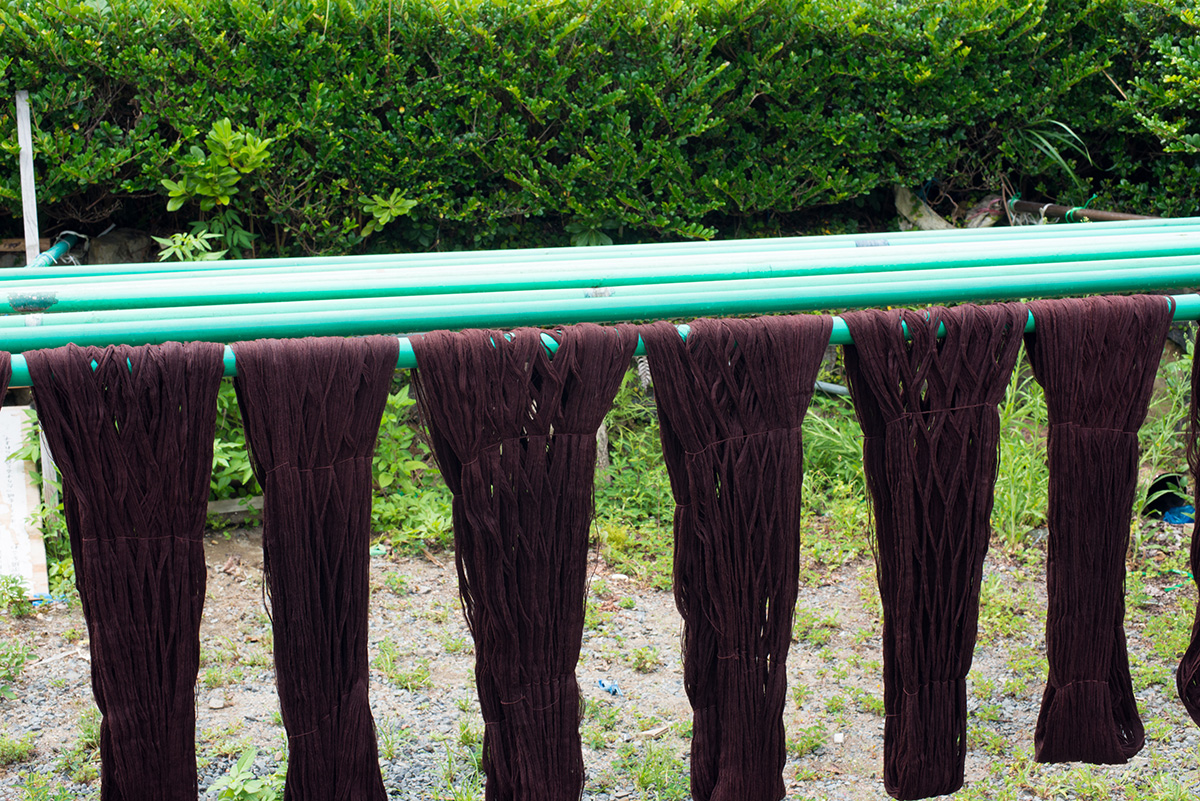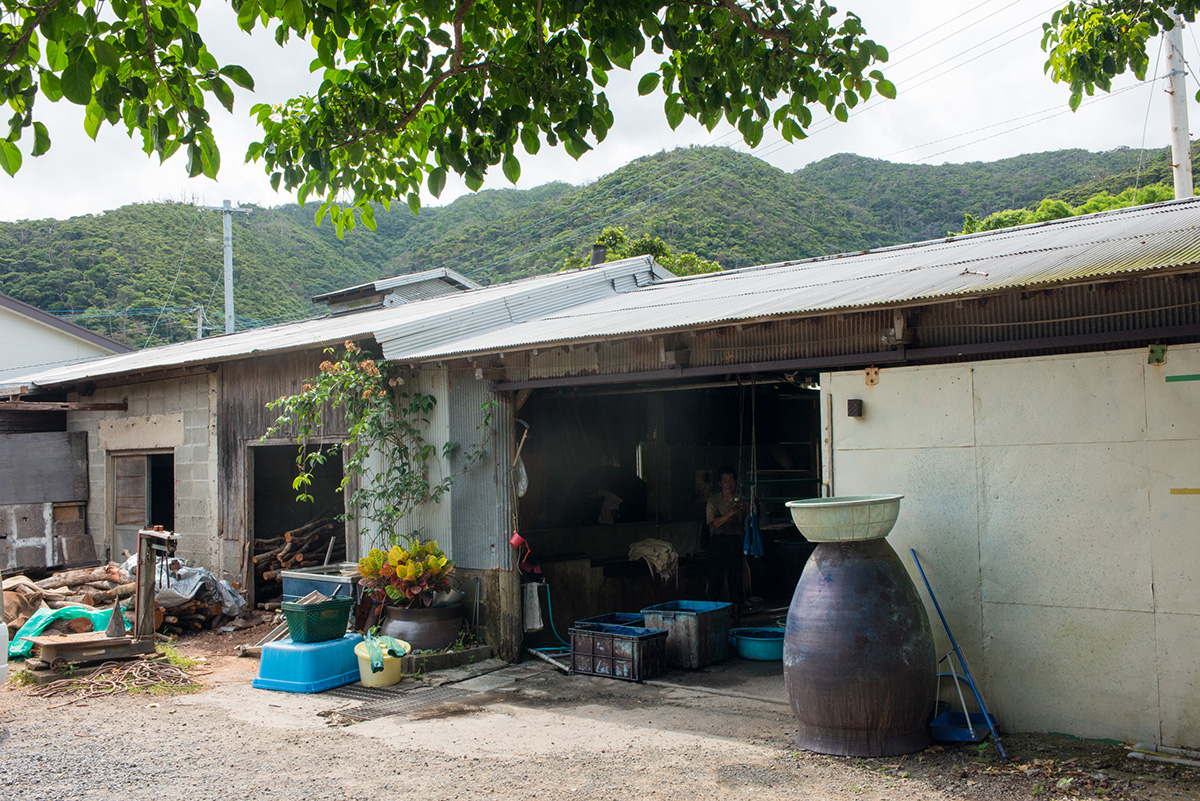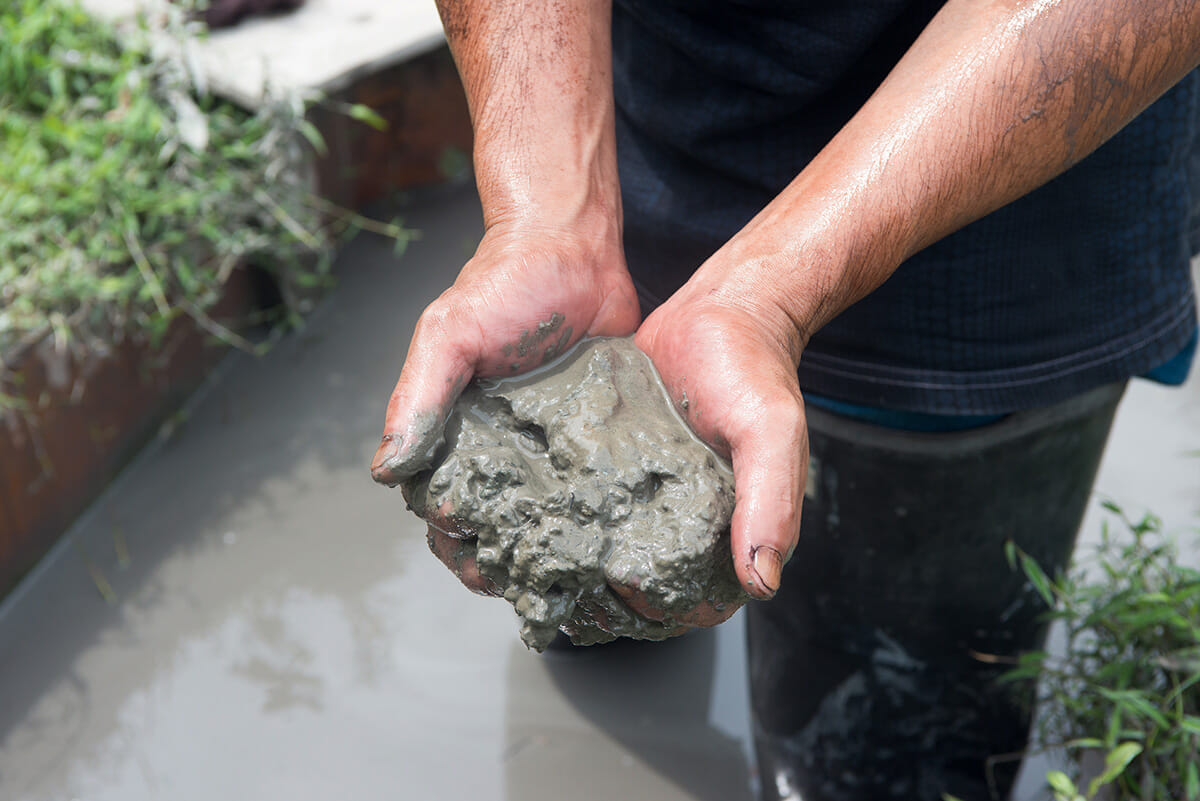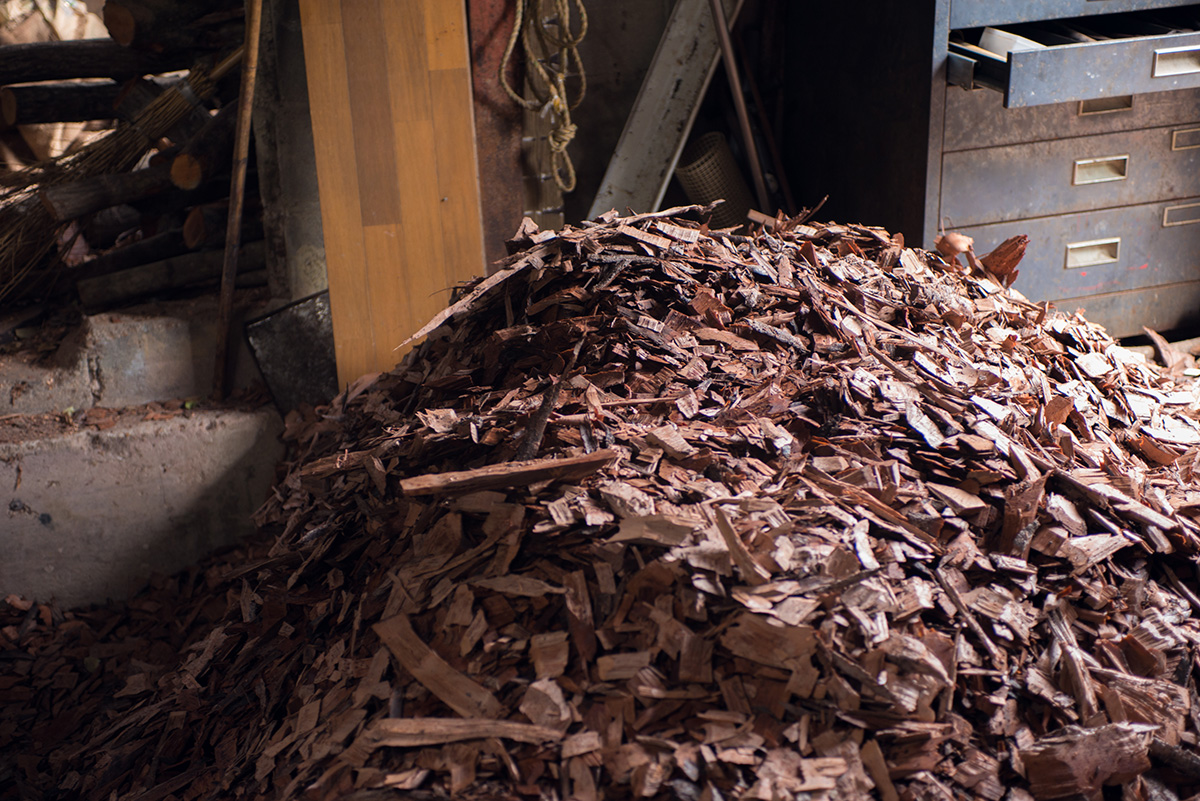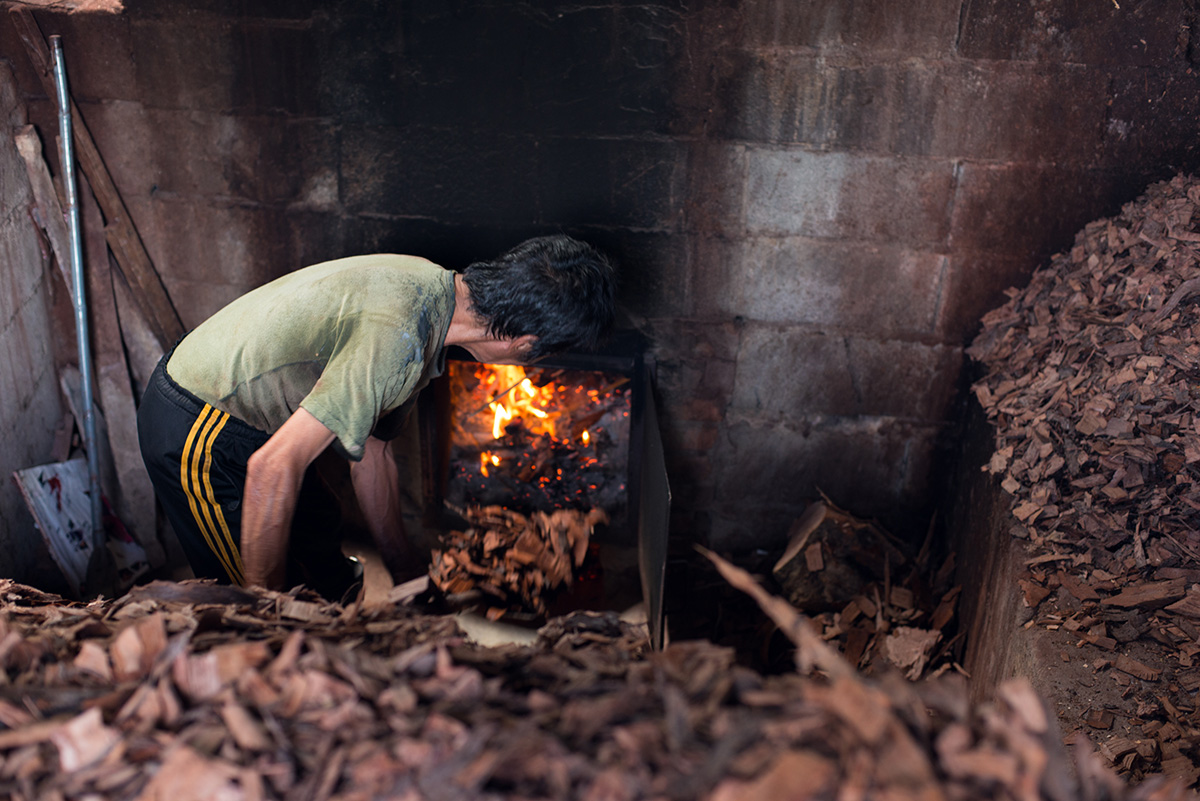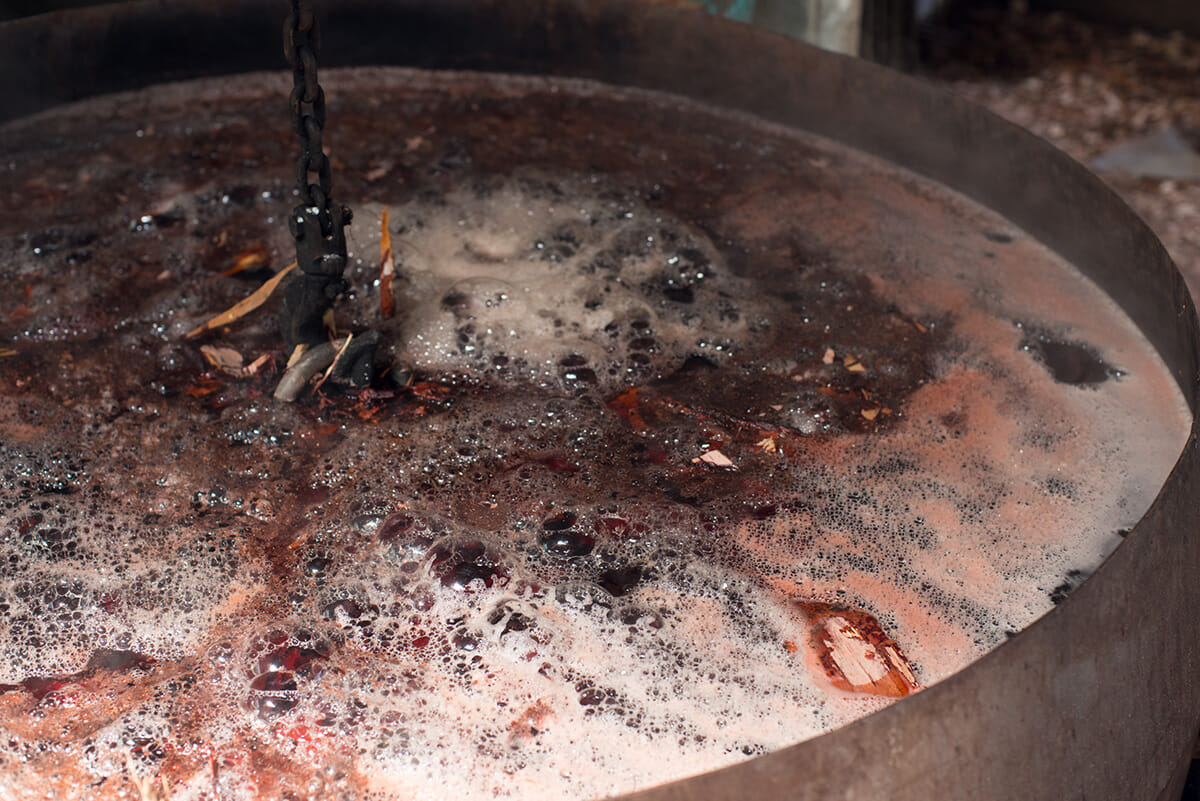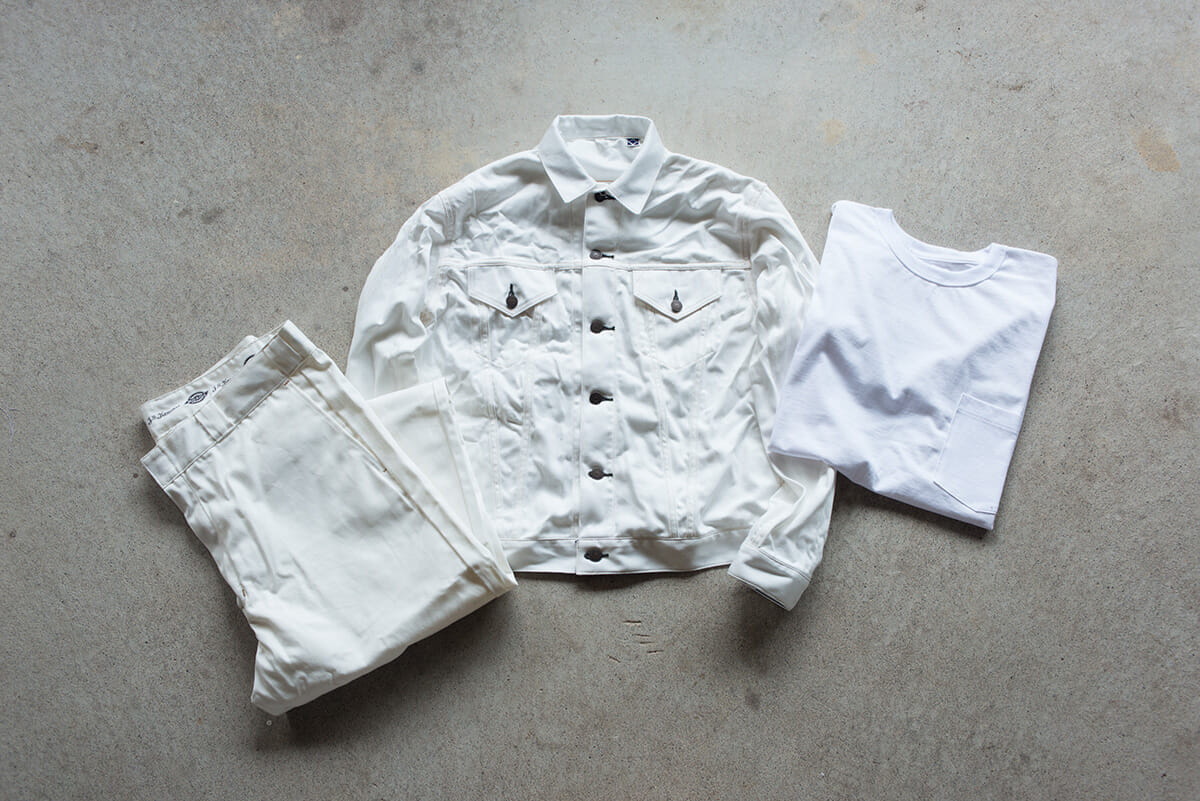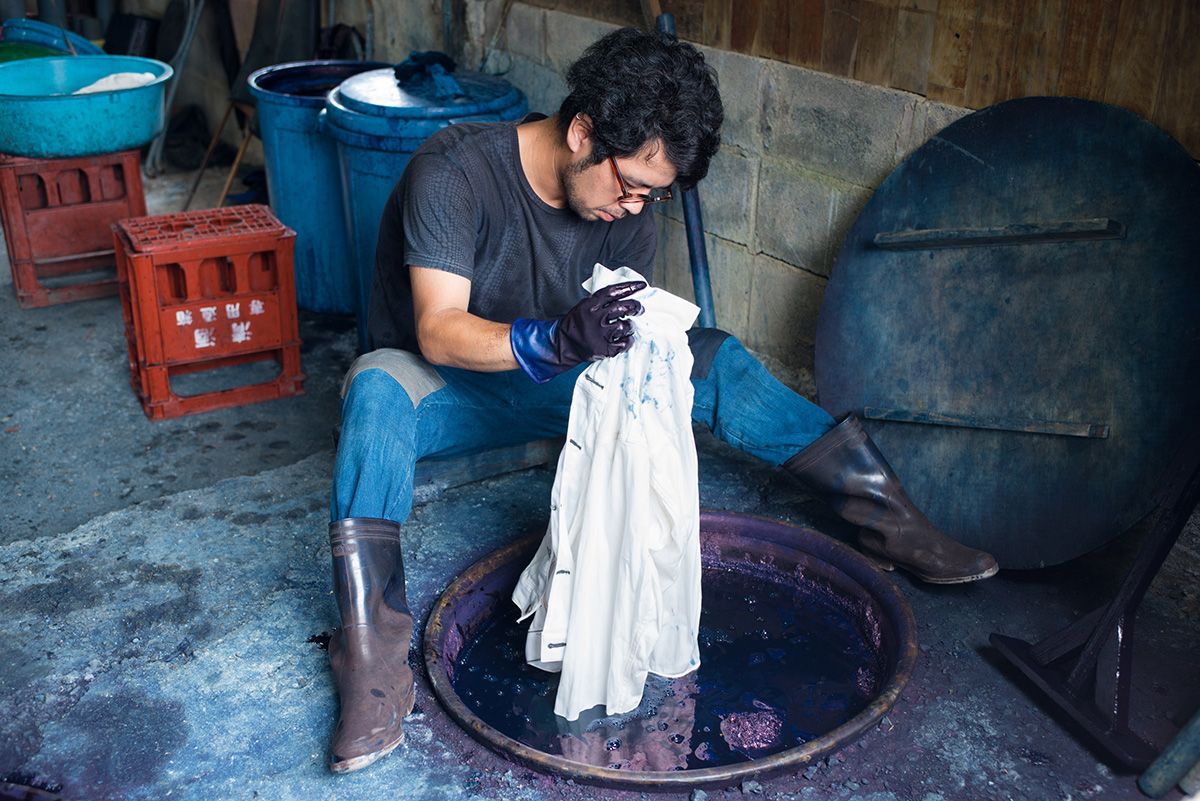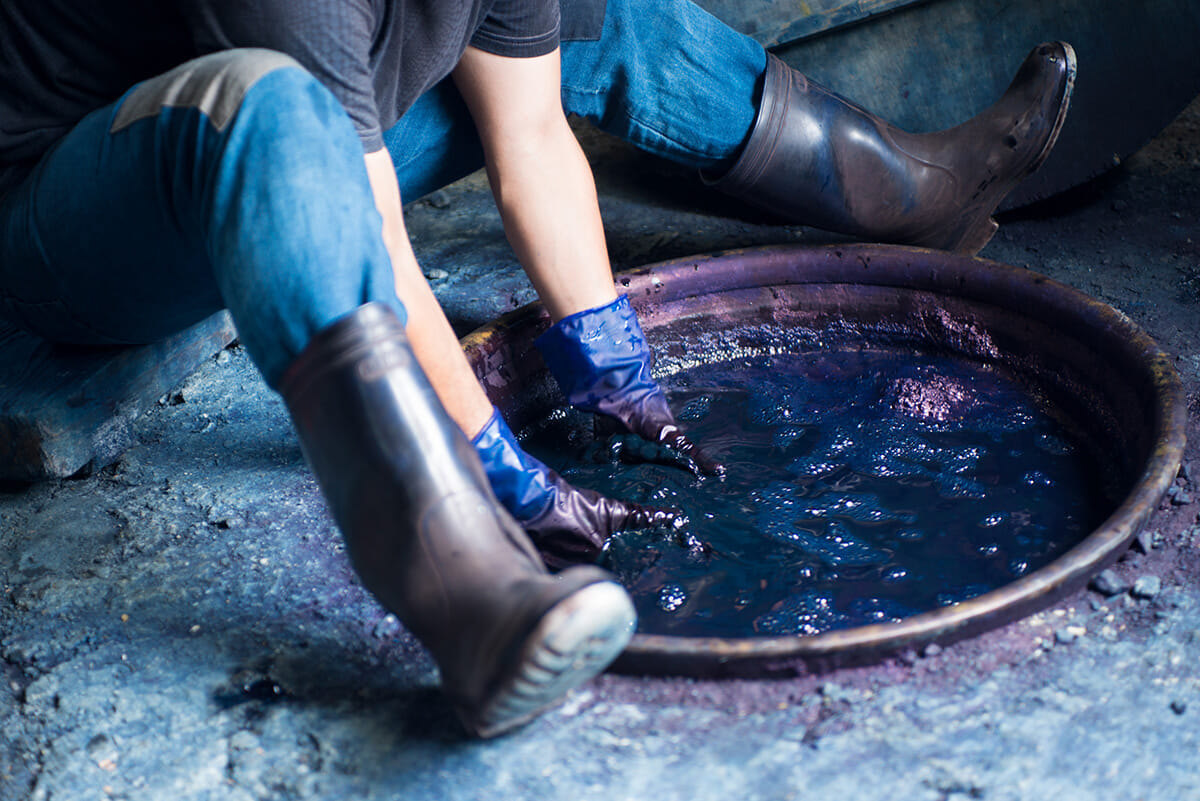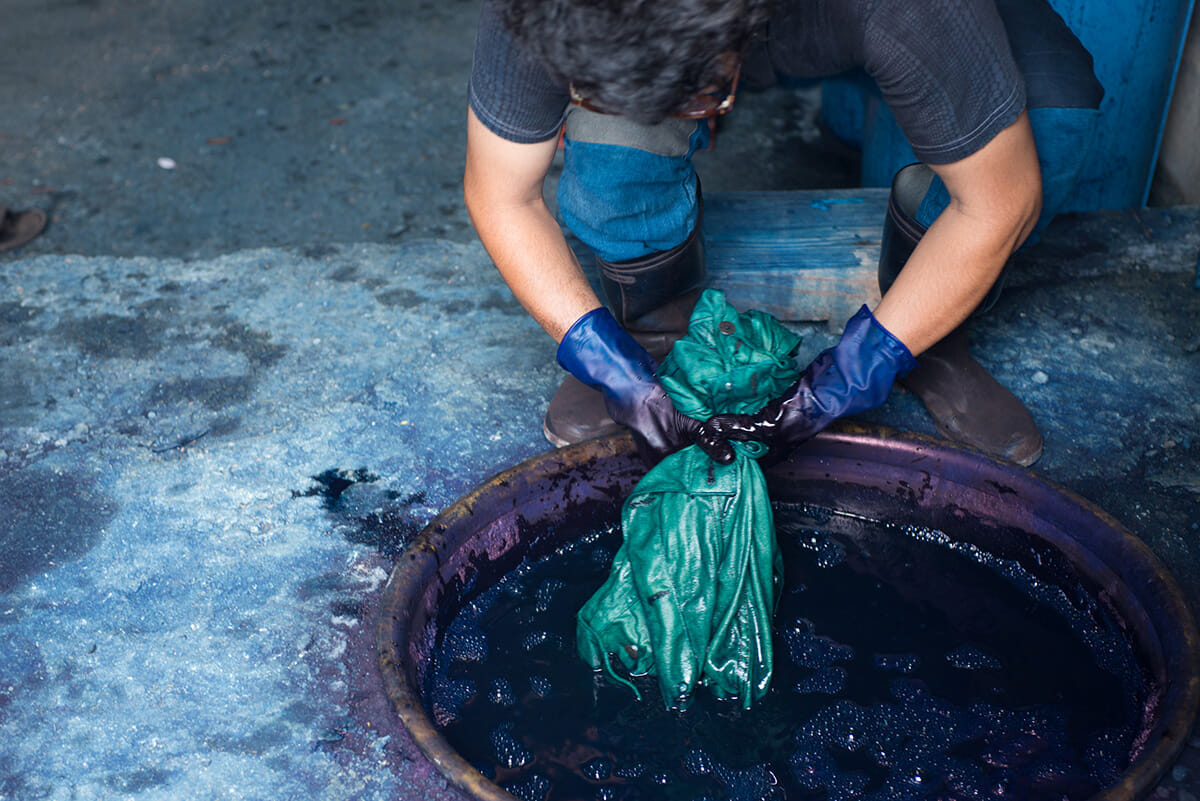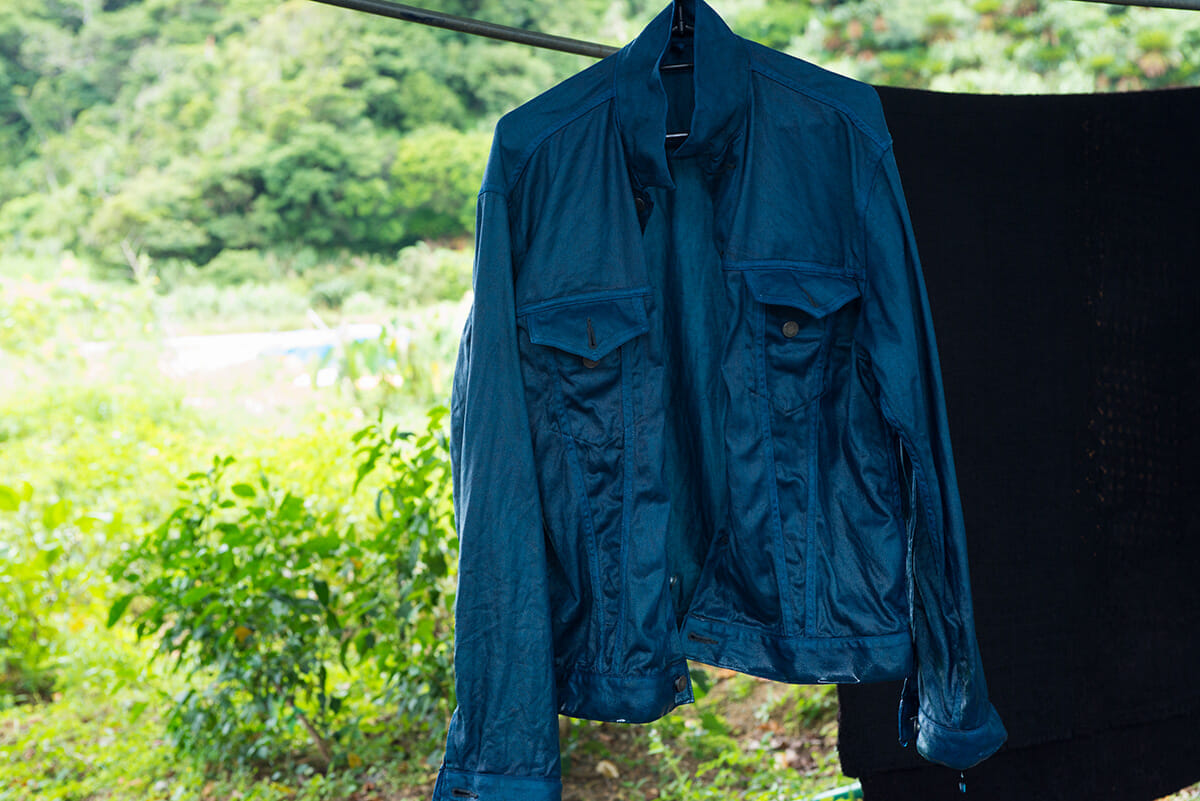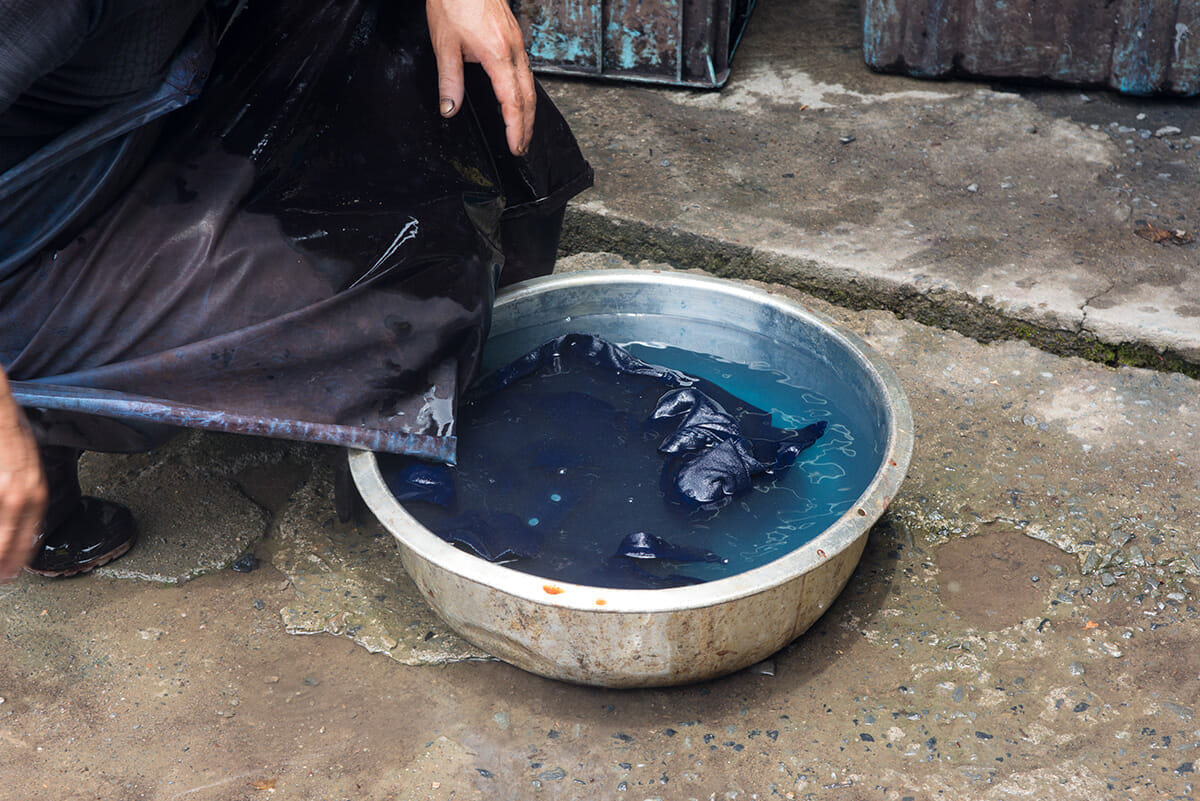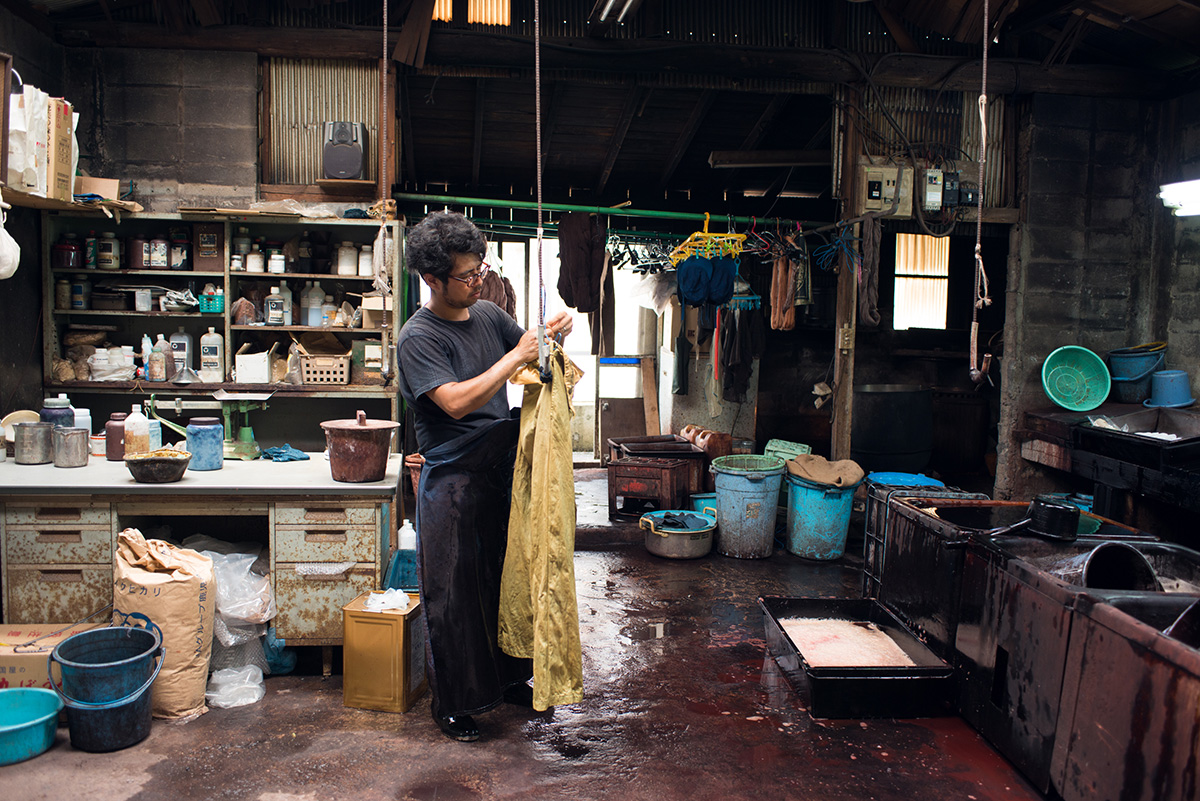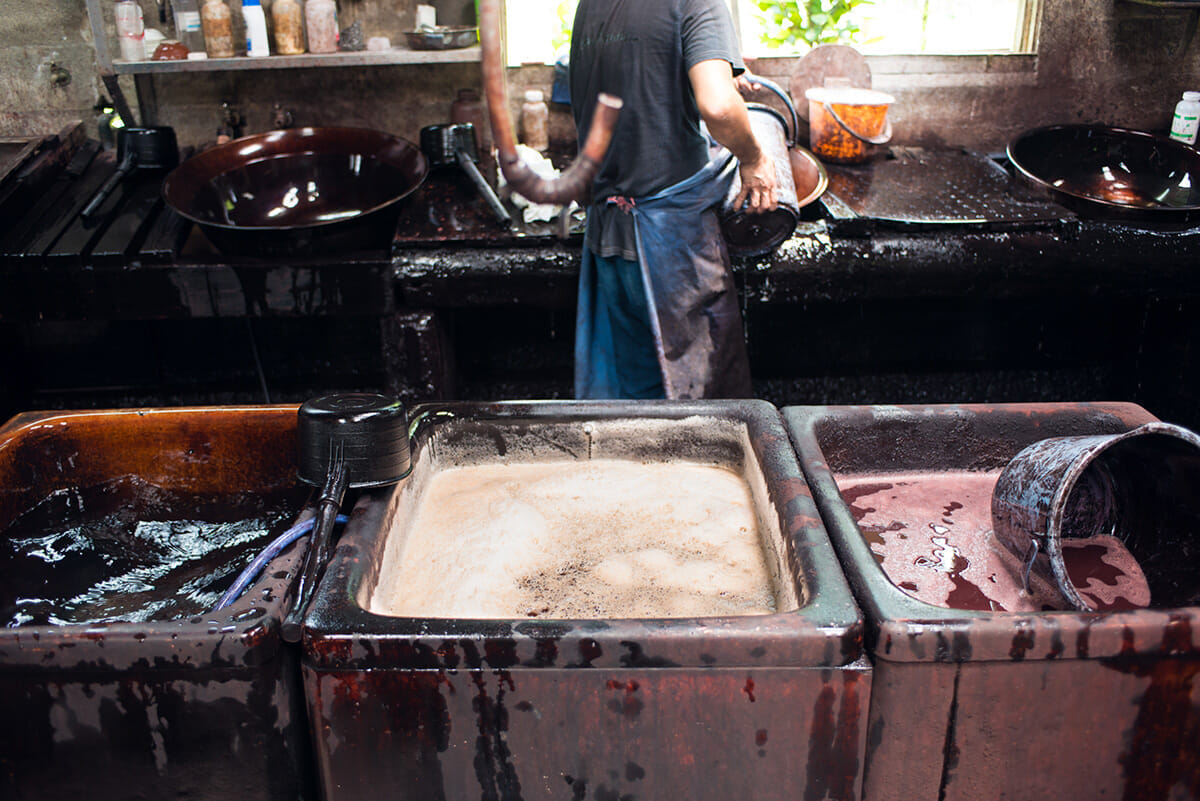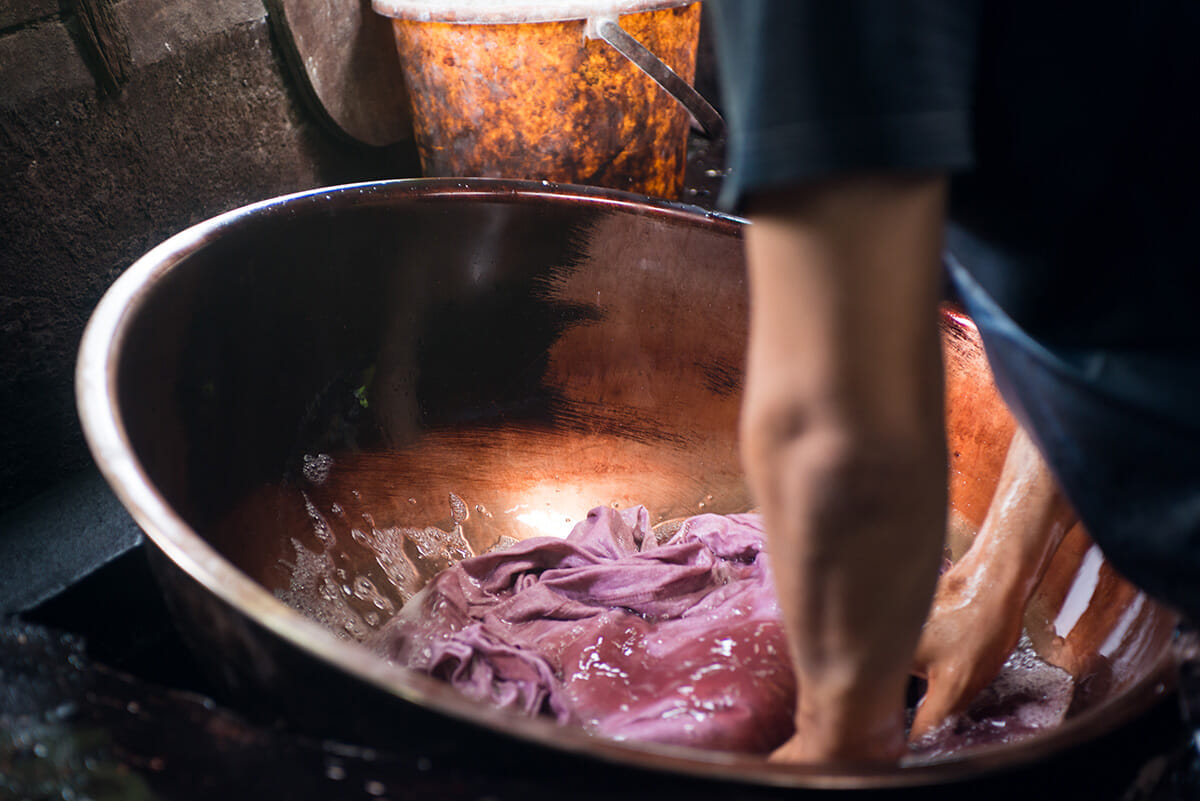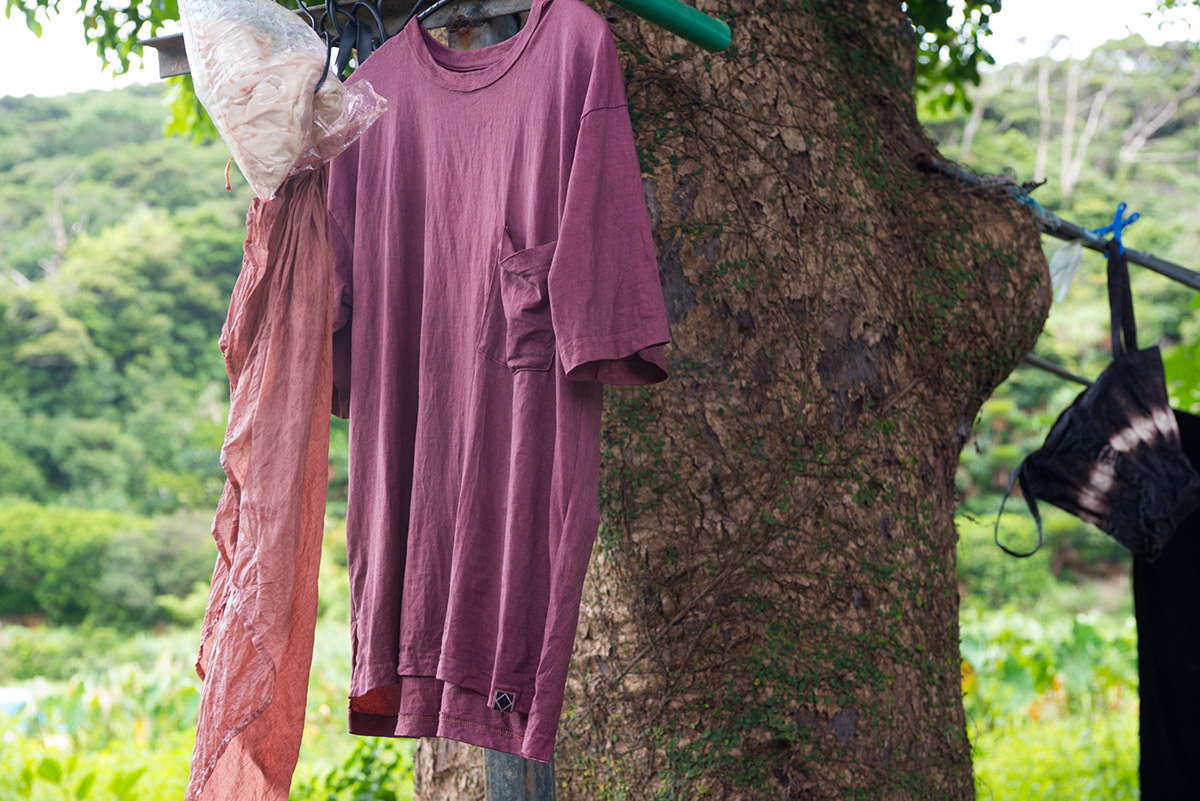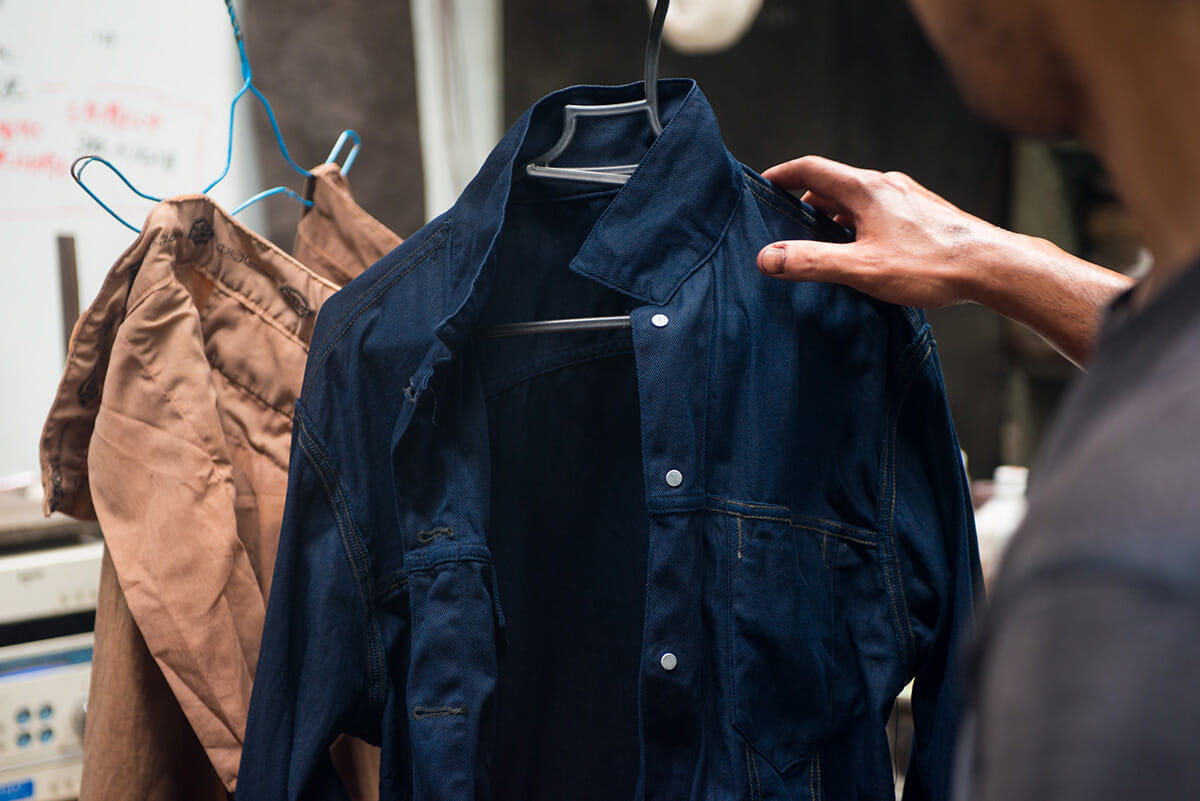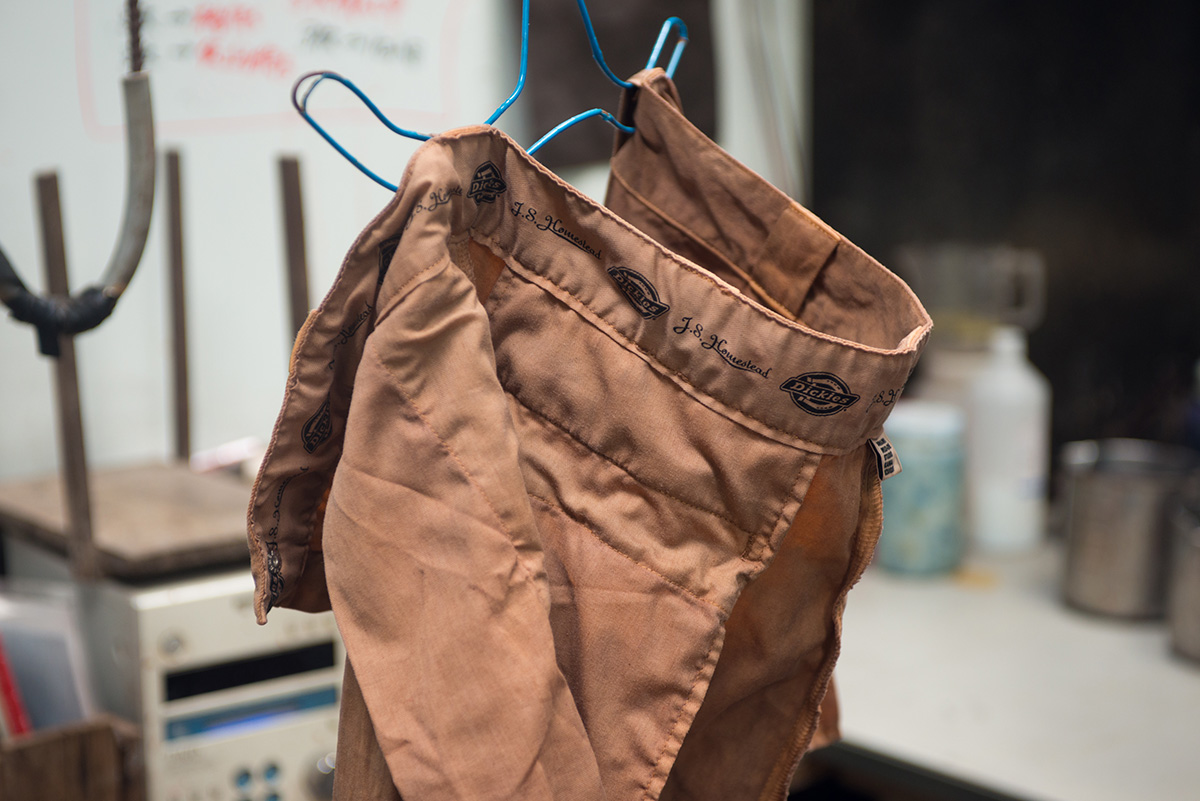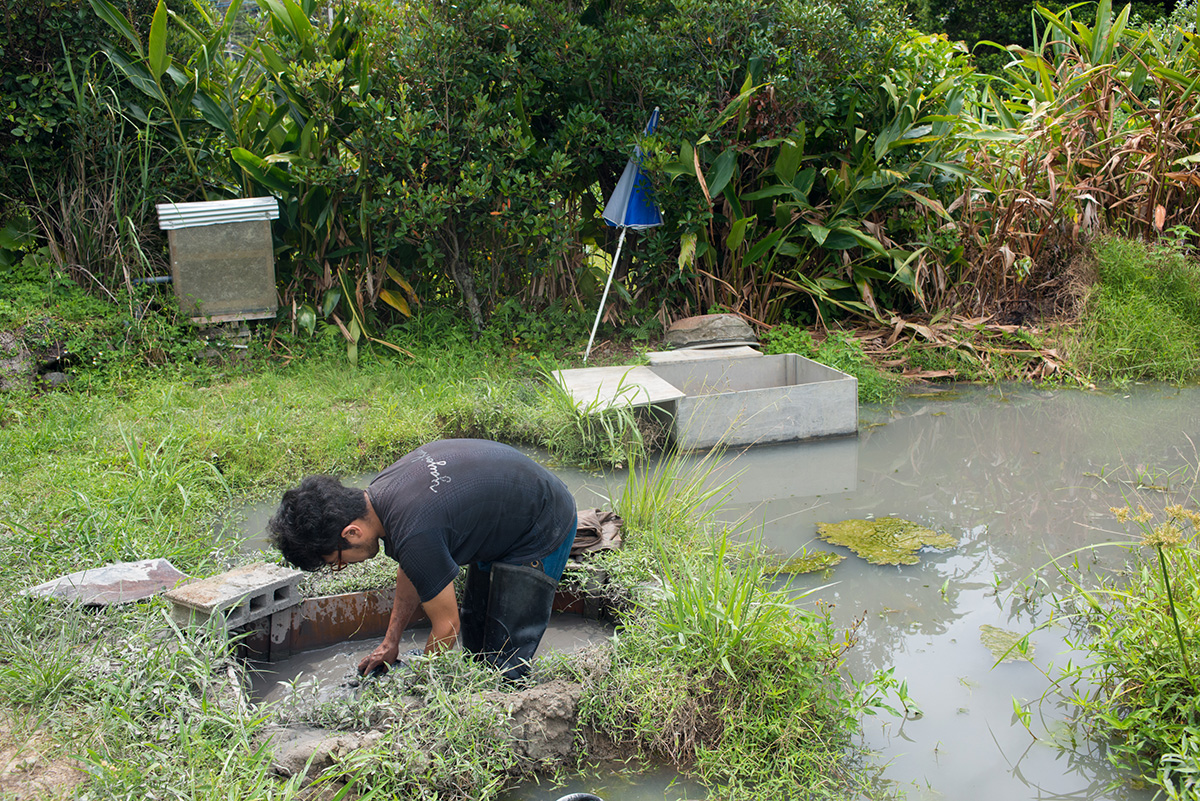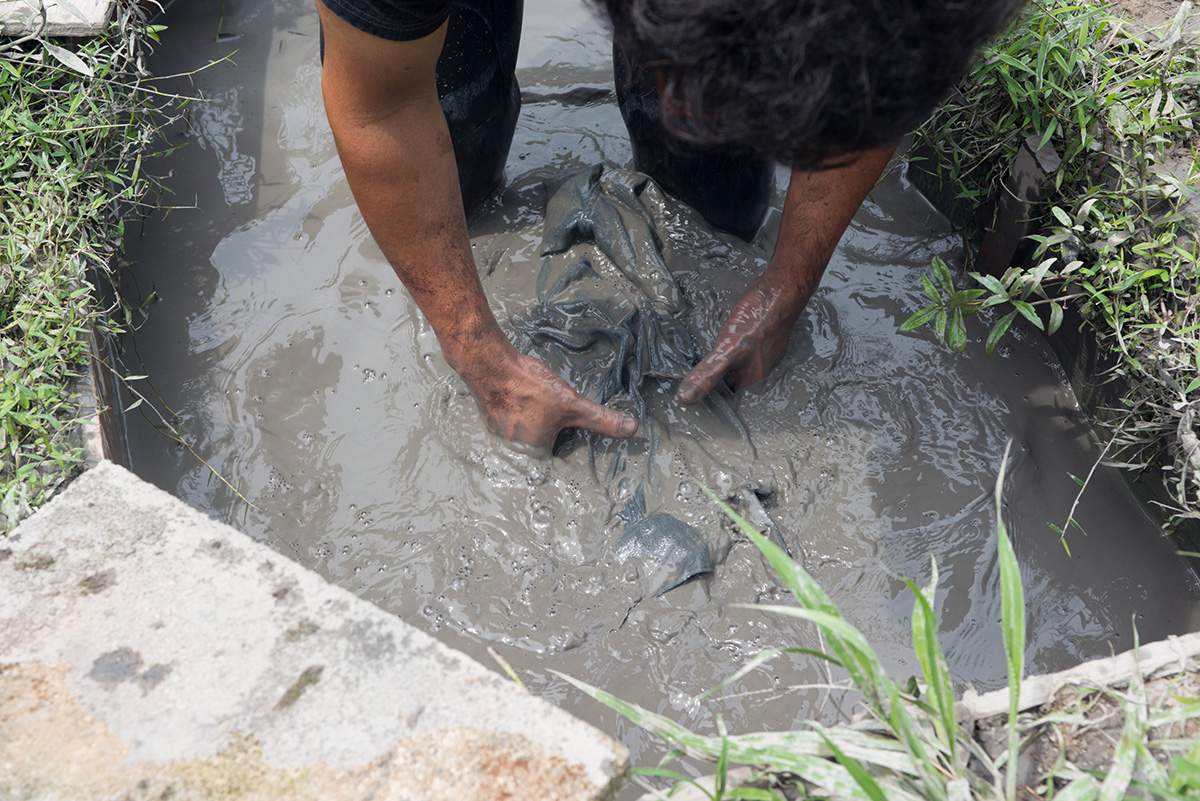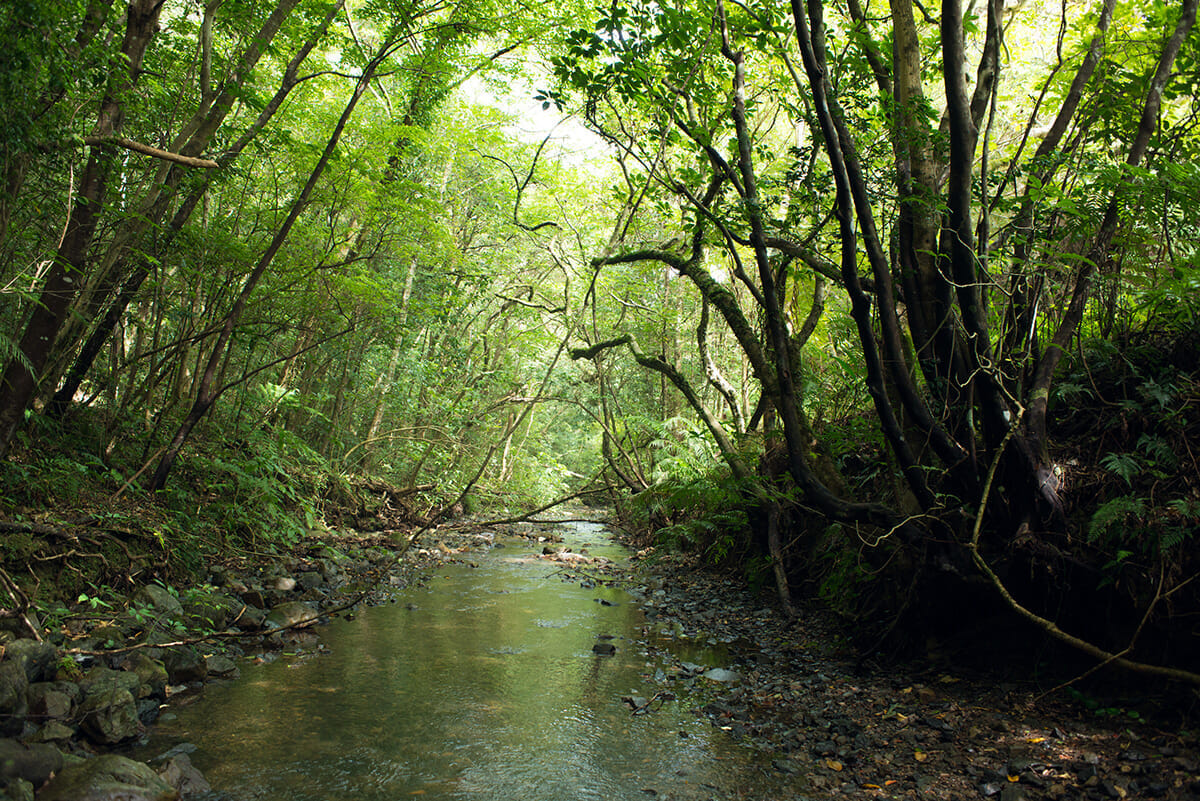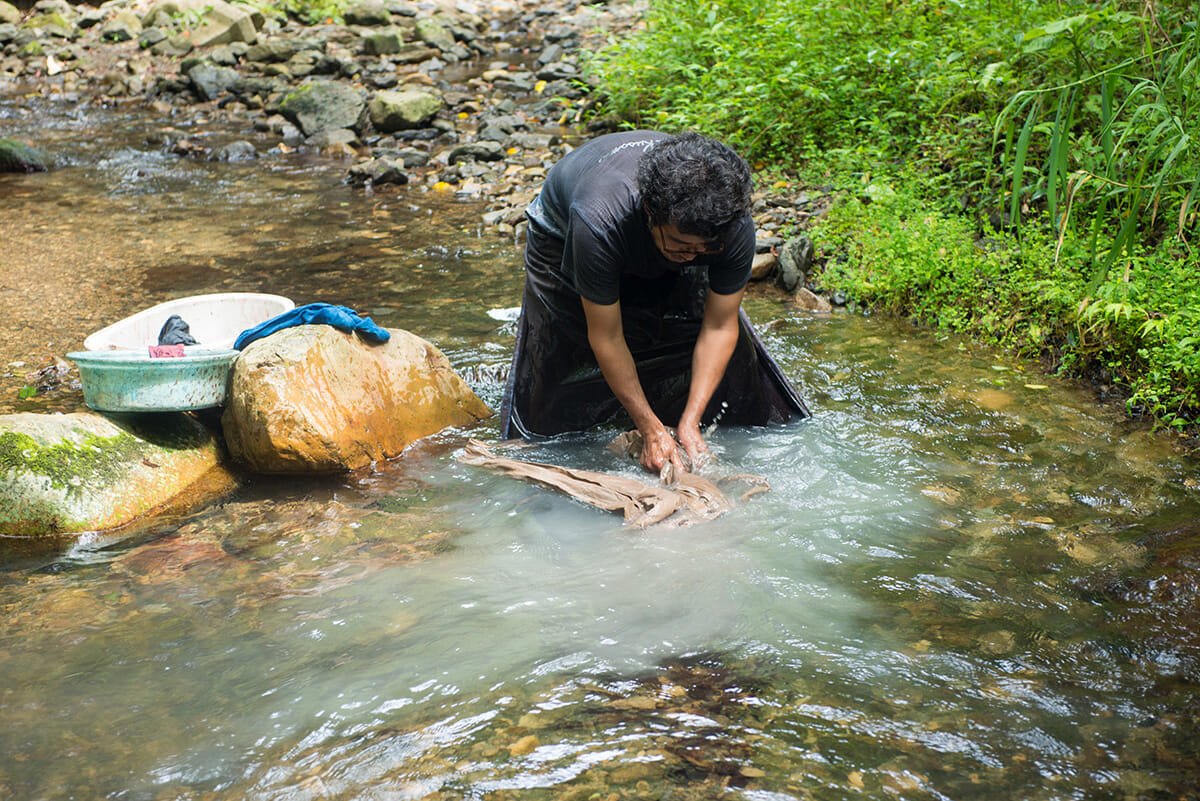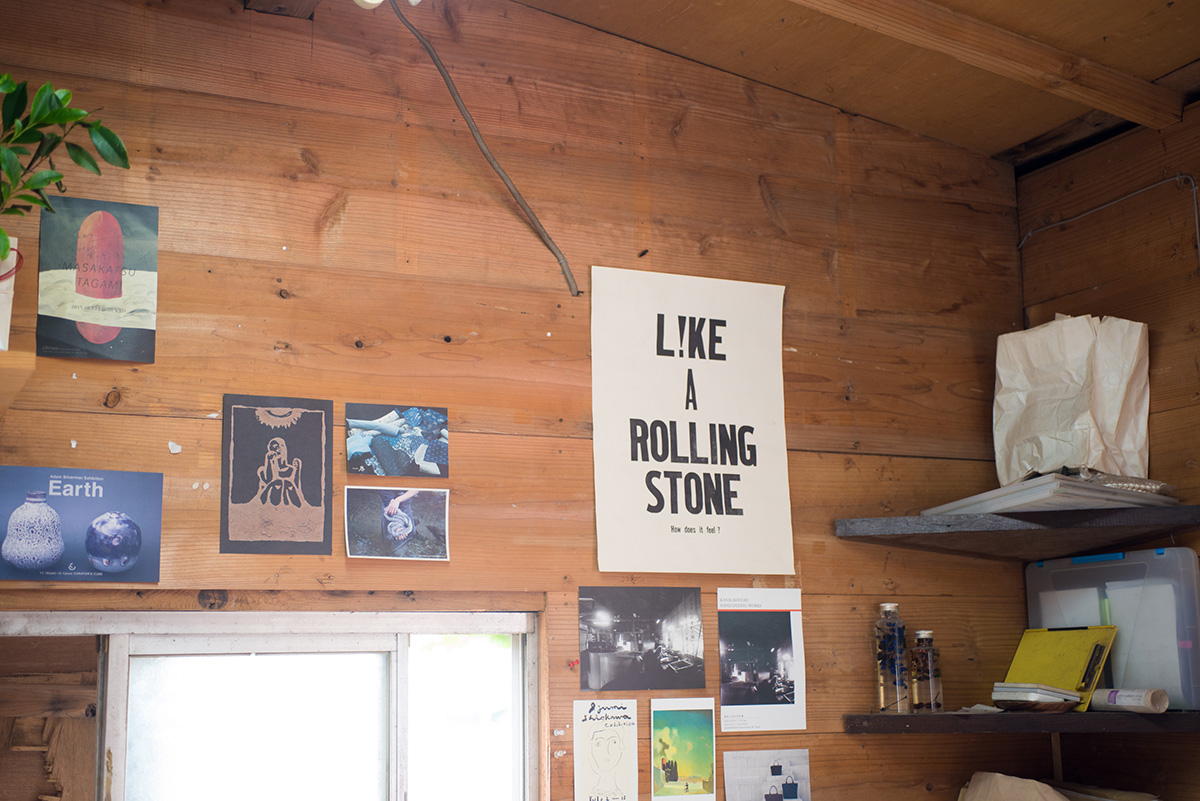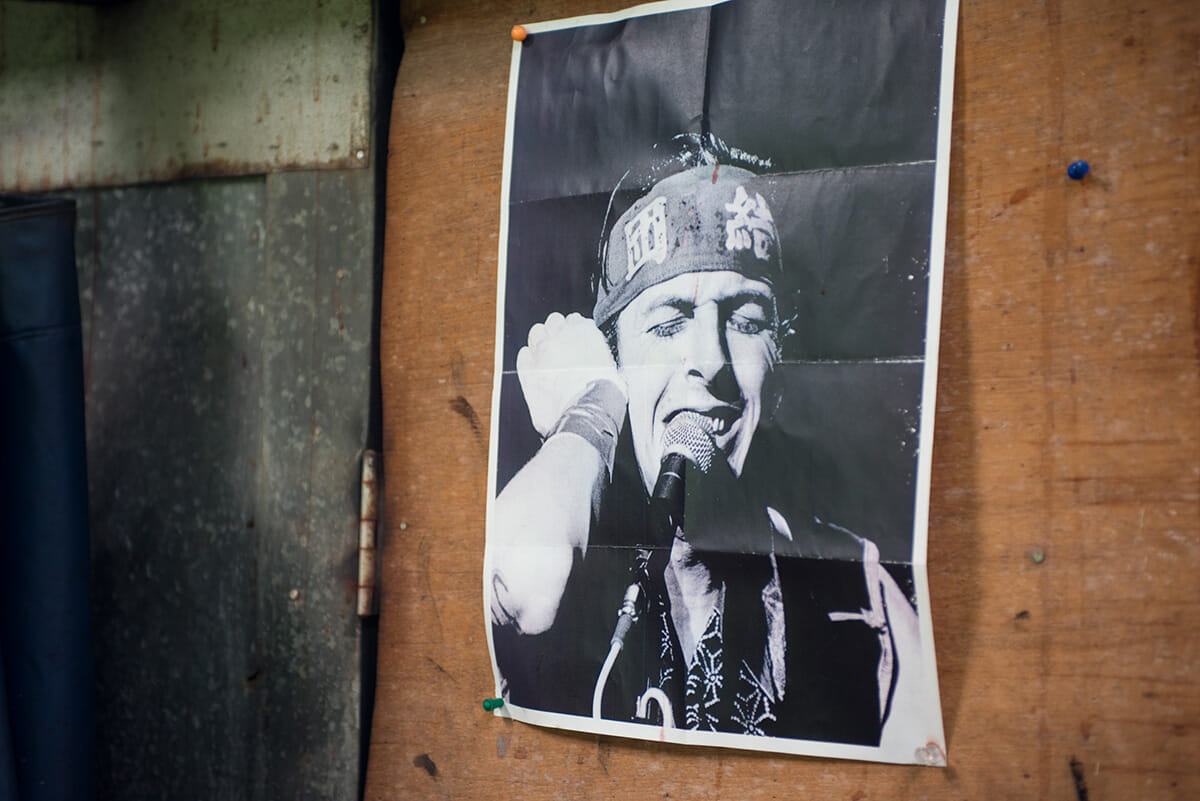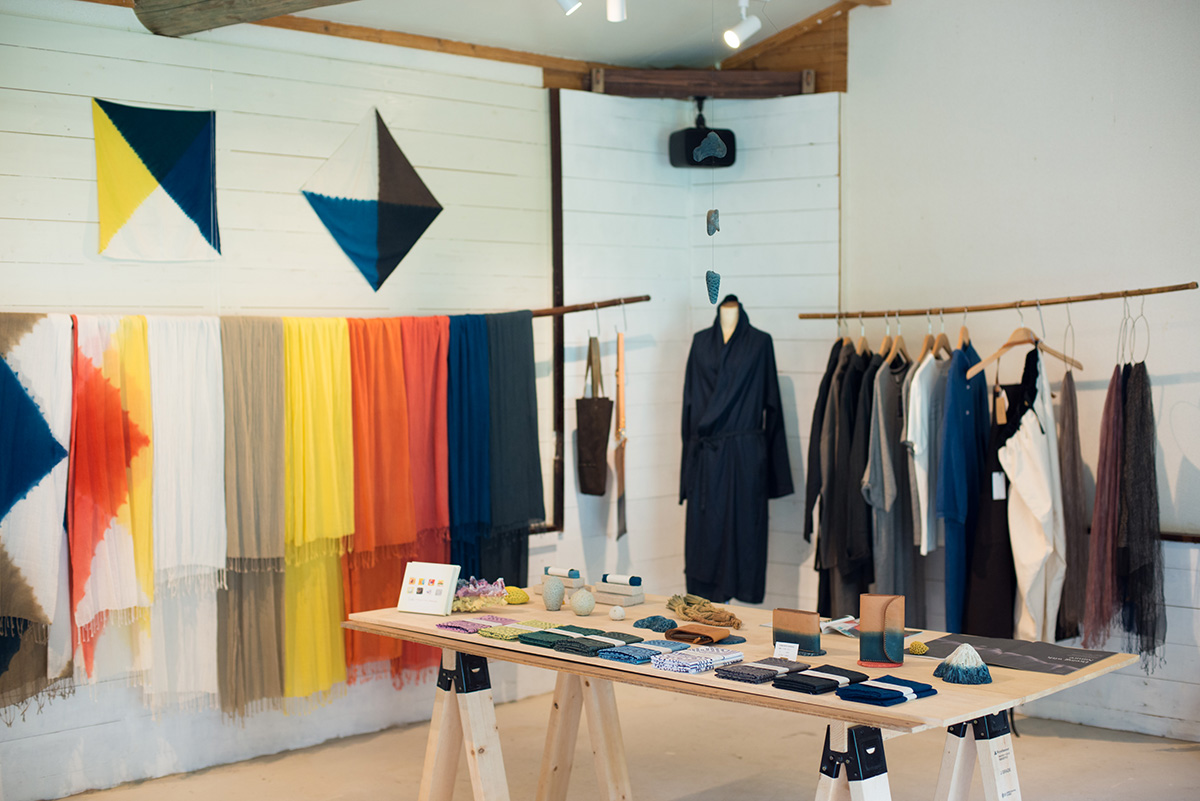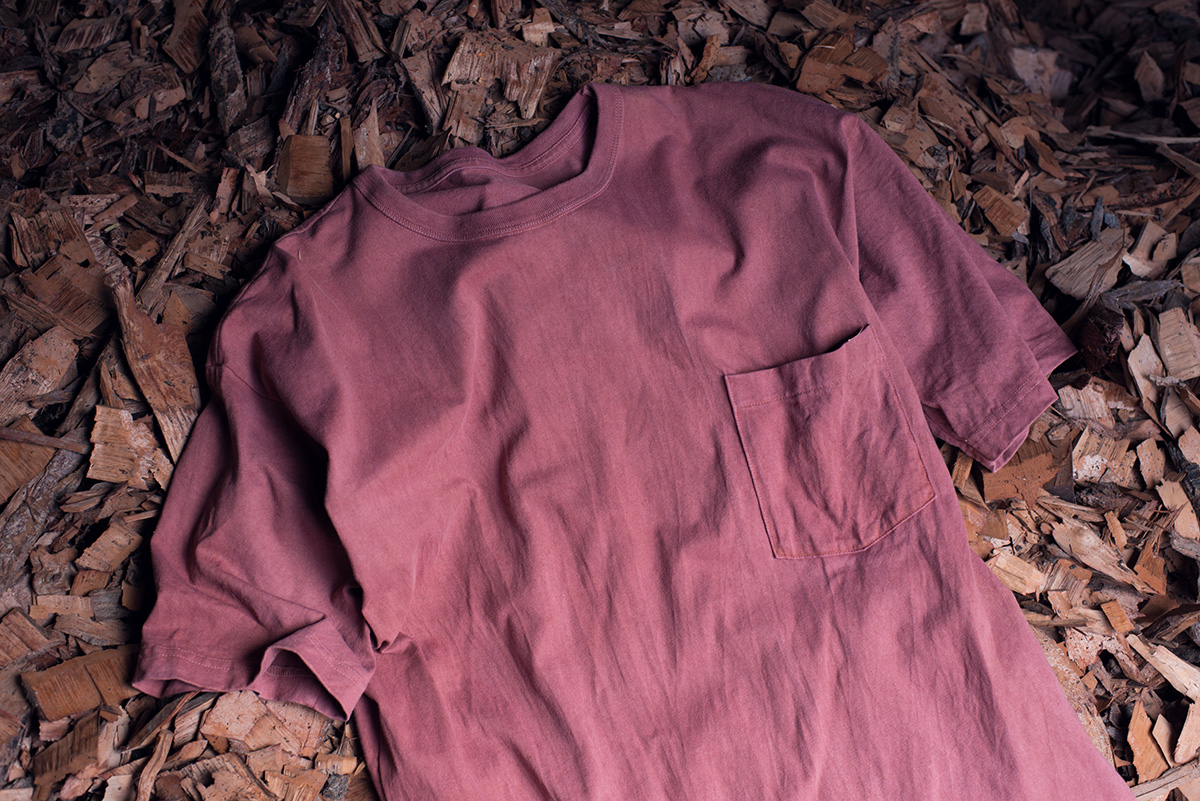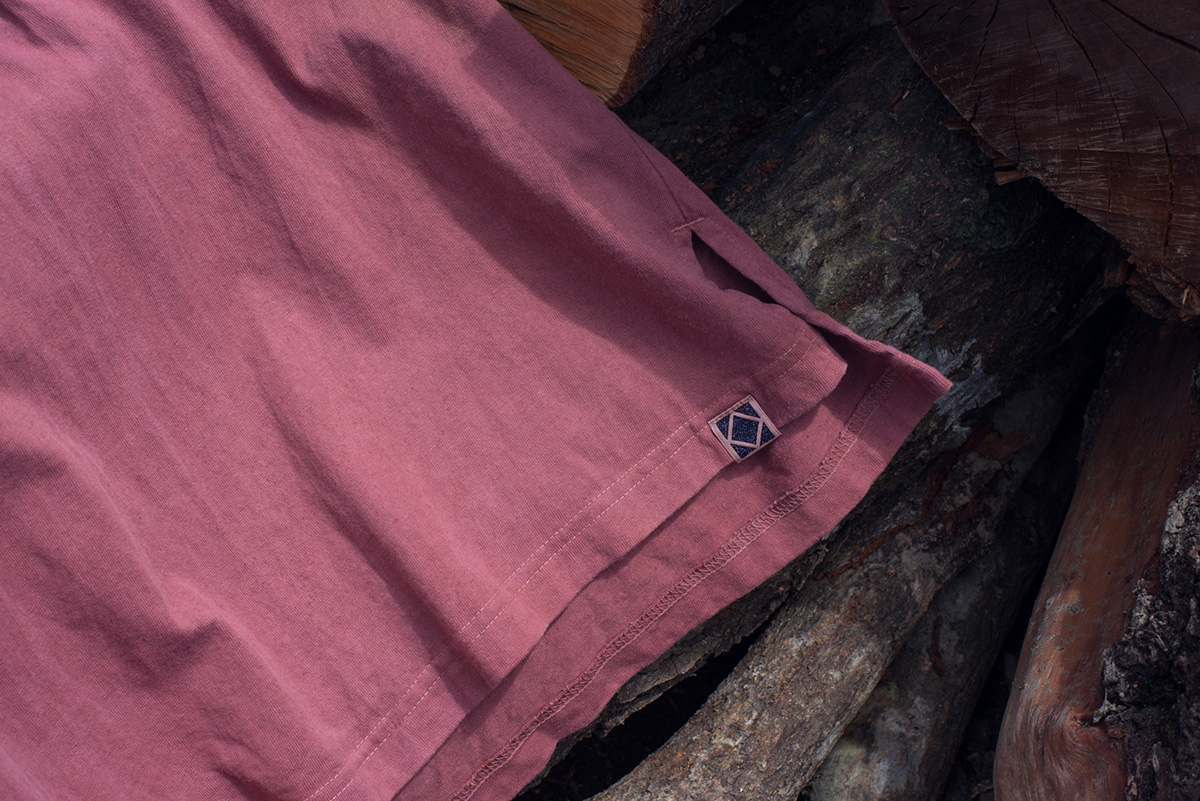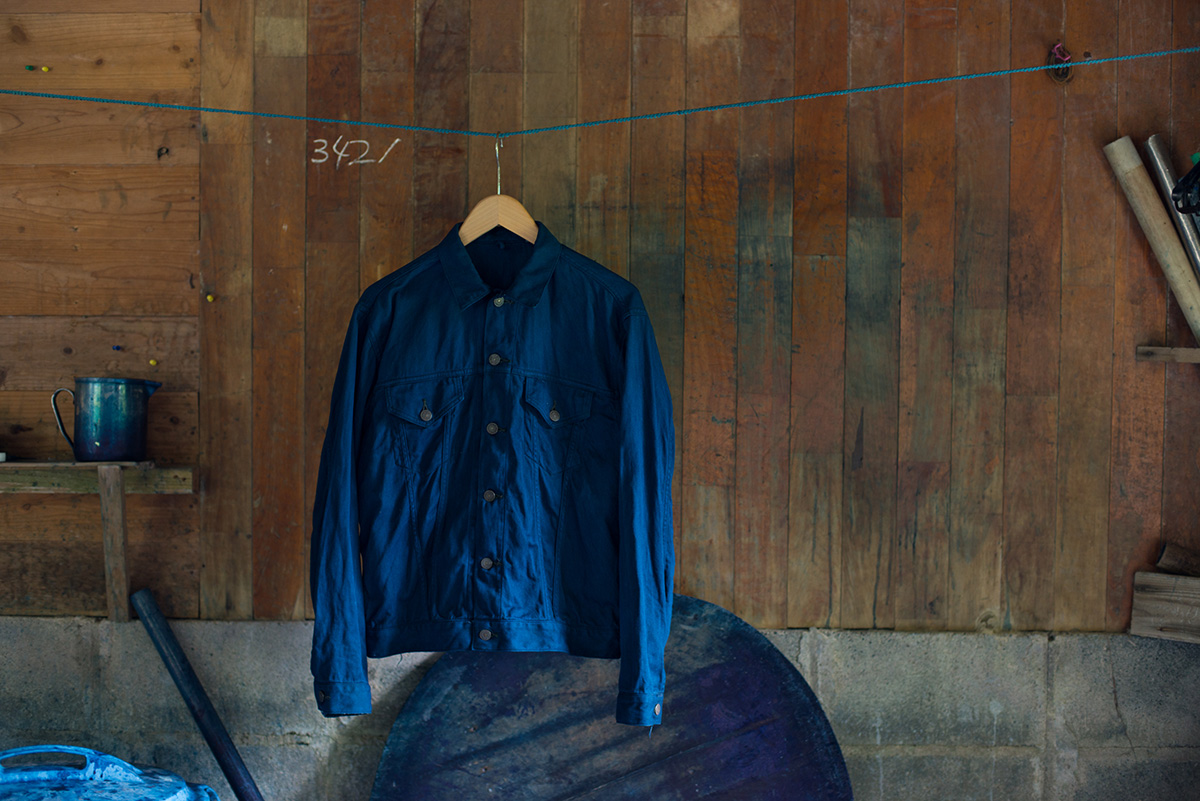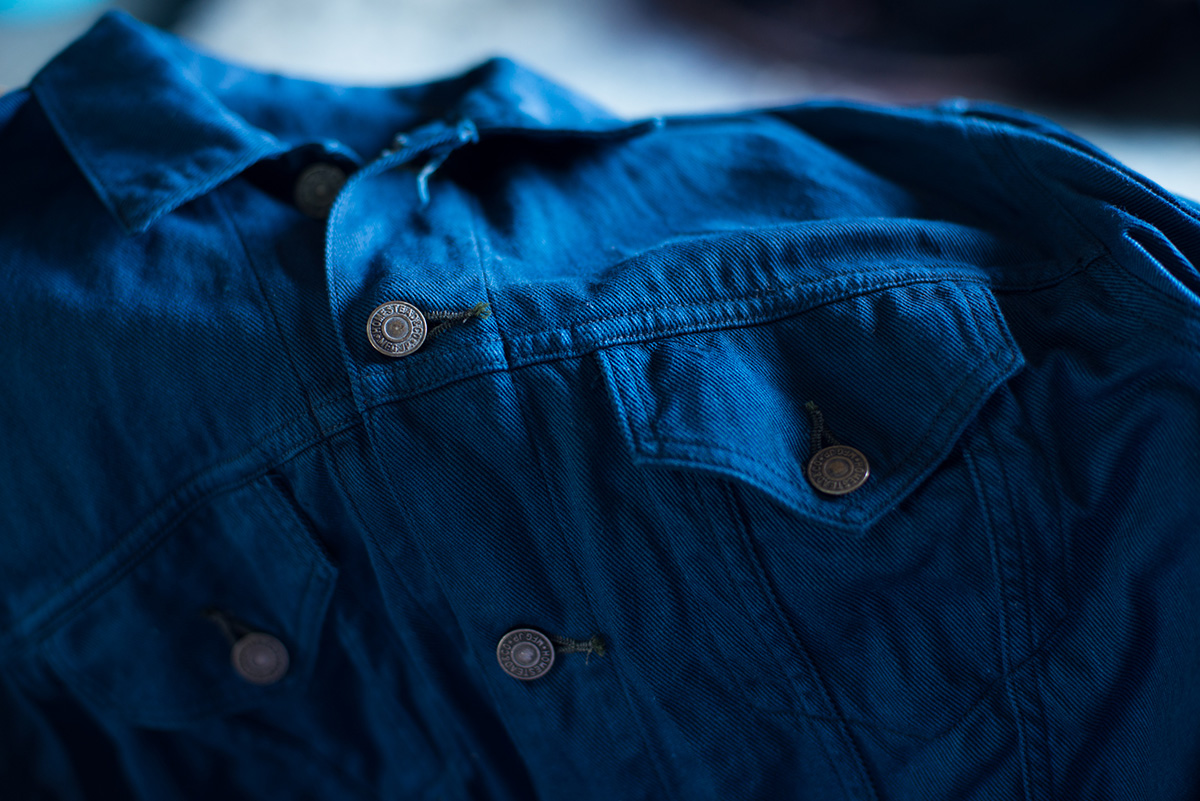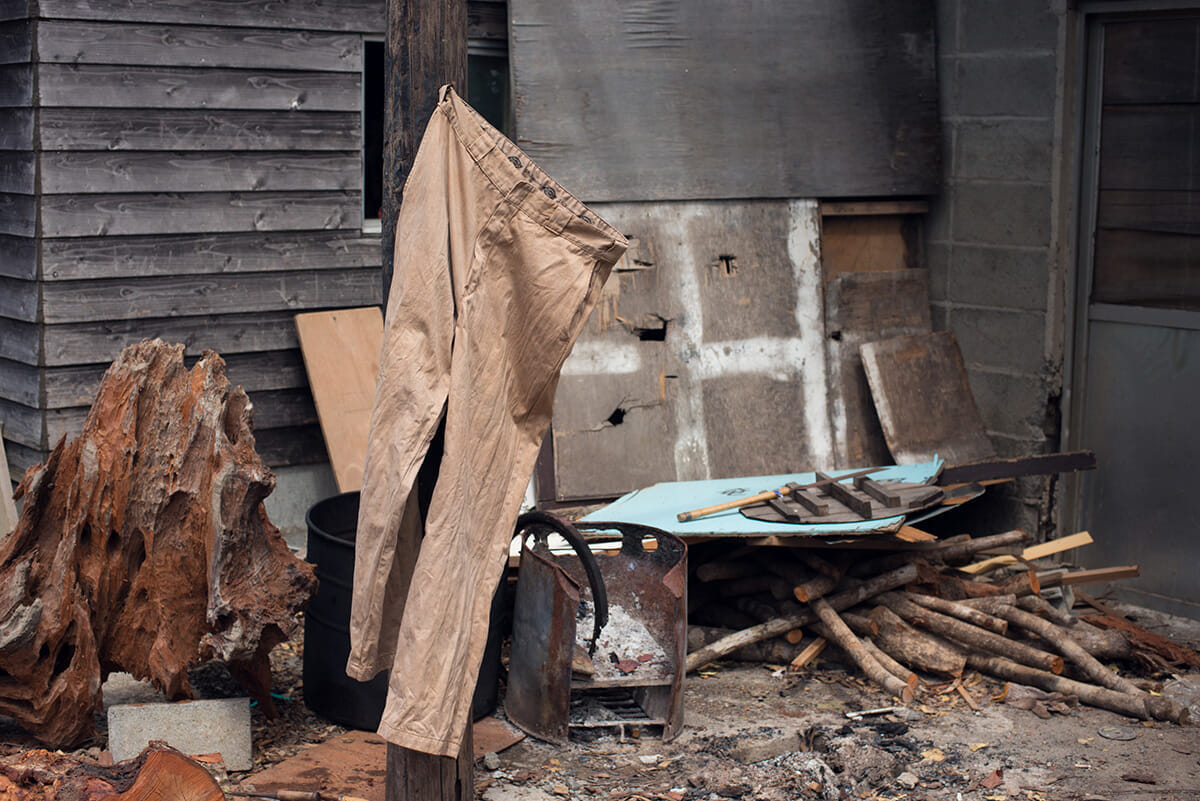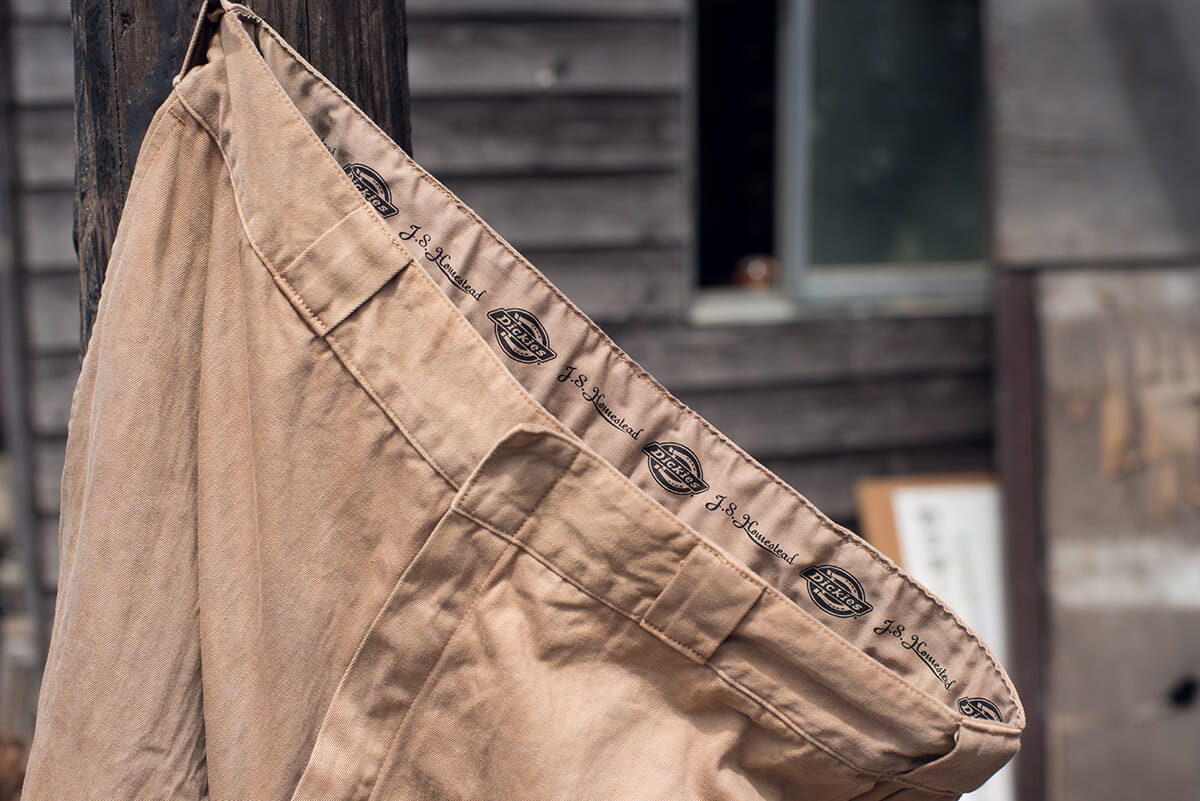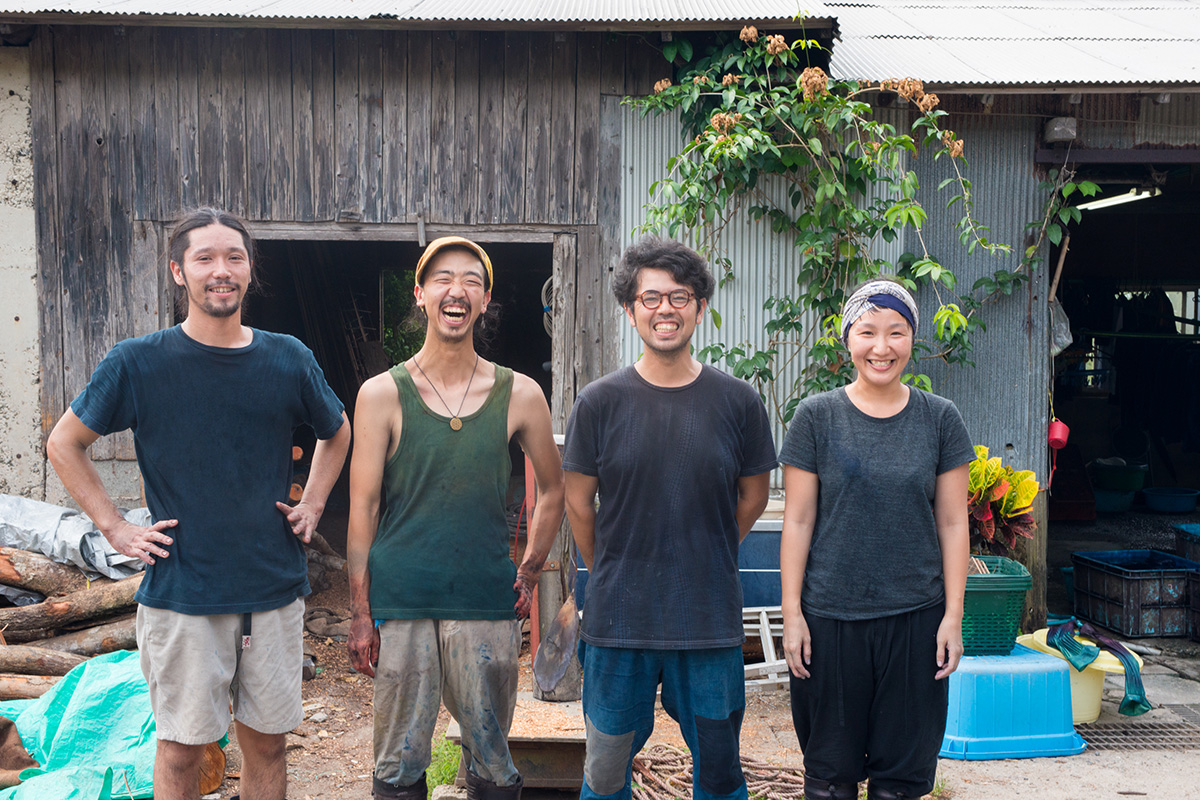The next morning after the items were dried overnight, Kanai-san showed us the items that had been dyed.
Amami Mud Dye × J.S.Homestead S/S Pocket Tee ¥10,000+TAX
This is a T-shirt dyed with sharinbai. It is dyed a reddish-brown color, almost purple. No other dyes are used, so this is the true color of the leaves. The gentle color of natural origin is appealing.
Amami Mud Dyeing × J.S.Homestead Blouson ¥25,000+TAX
Next is the jacket. Indigo blue from indigo dyeing and black from mud dyeing combine to create a color with depth. The blue shines brightly in the light because of the deep, dark shadows. This depth is created by the mud-dyeing process.
Amami Mud Dye × Dickies × J.S.Homestead Pants ¥18,000+TAX
The pants have been dyed a beige-like color. Sharinbai and mud dyeing alone cannot express this color. The ochre color is dyed as a base, and the Amami dyeing technique is added to it. As Mr. Kanai said, "I challenge various combinations," it is possible to achieve this light color by taking a multifaceted approach.
Young artisans working with Mr. Kanai to explore new mud-dyeing possibilities. Many other craftsmen are also working at Kanai Kogei.
. Mr. Kanai's careful handling of each item was impressive. The workshop is staffed by older craftsmen who preserve the tradition of Oshima silk and younger craftsmen who take on new challenges. What they both have in common is that they use both hands to carefully handle each object to be dyed. They do not rely on machines, but believe in the techniques they have inherited to deliver reliable quality. Therefore, there is a limit to the number of items that can be dyed, and the products have a different look from those that are mass-produced in factories. It is easy to use words like "handmade" and "handwork," but at the core of these words are tradition, technique, and the sweat of our craftsmen. When you pick up one of our products in a store, please take a moment to recall the elements that make up this product. You will find that it is not only well-designed, but also has a thick charm that cannot be seen on the surface.
In addition, "Journal Standard Omotesando" is simultaneously selling wood bowls specially ordered by Mr. Tomoyuki Imada of Woodworks-CUE, a woodworker living in Amami Oshima, and dyed with mud and indigo by Kanai Kougei, as well as plates and flower vases from the regular lineup. Please check them out as well.
